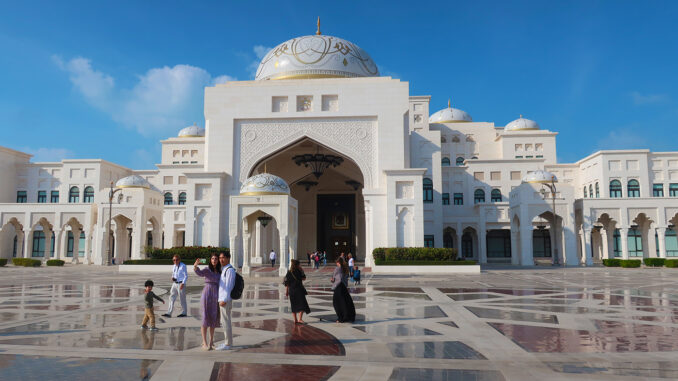
At every port on a cruise in the United Arab Emirates, it’s obvious that each of the Arab sheikdoms are playing top this with their newly built soaring skylines, their supersized yachts and their over-the-top palaces.
So, by the time we reached Abu Dhabi and were promised a tour of presidential palaces old and new, the question was: can you top what we’ve already seen?
But an afternoon in the marbled halls of Abu Dhabi’s newly built palace followed by an evening at a newly created gala festival around the city’s original palace turned into the most amazing afternoon on a week of fascinating excursions from Costa Cruises’ newest ship Costa Toscana.
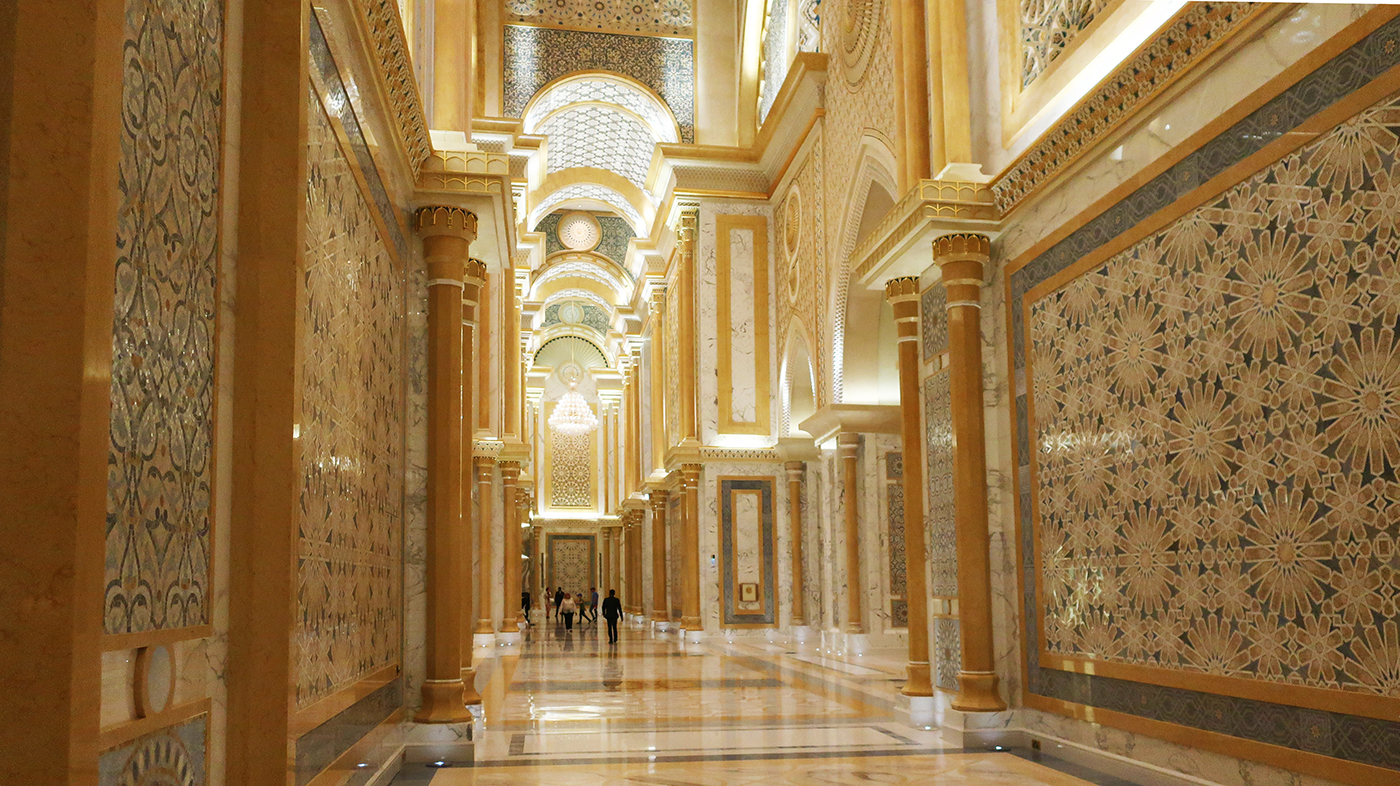
A stately pleasure dome decreed
Little did I realize that even Ali Baba’s fabled cave would pale by comparison to Qasr Al Watan, Abu Dhabi’s grand new presidential palace. The soaring Great Hall in the center of the building is itself the size of a soccer stadium but one made of exquisitely inlaid marble and featuring a 120-foot central dome whose chandelier includes 350,000 pieces of crystal. And it’s just the starting point of the palace whose soaring wings stretch to the horizon.
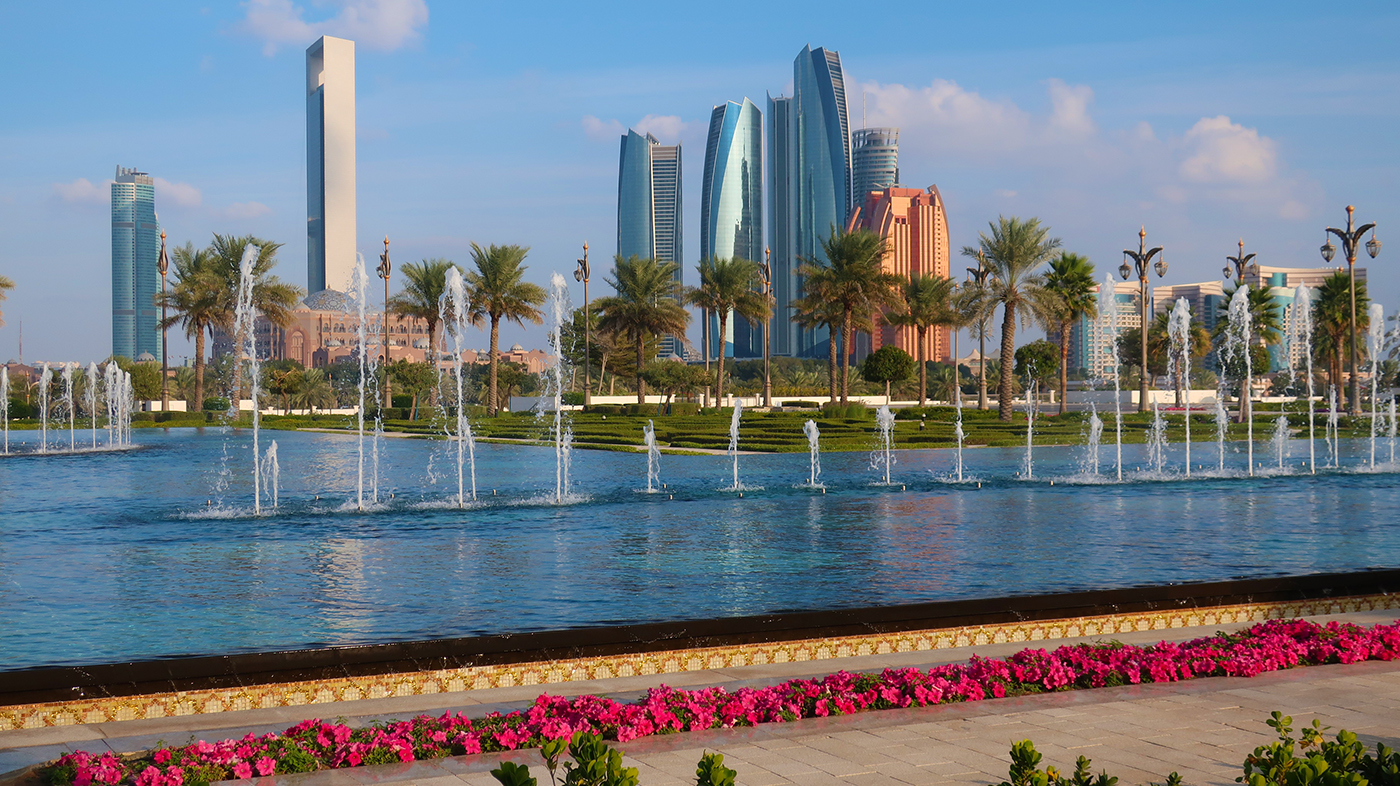
Amazingly, it only took seven years to build this massive complex surrounded by miles of limestone walls that opened to the public in 2019. The cost? Let’s just say this is what you can do when price is no object.
The palace grounds are so vast that arriving at the visitor center you need to board a bus that drives for five minutes through the gardens to reach the actual palace that must have taken entire mountains of white marble, granite and limestone to create.
Rooms open to the public include a museum of Arabic scientific discoveries and a library that gives a new meaning to higher learning,–with book cases several stories high that feature 40-foot ladders to reach upper shelves. Other eye-openers are the massive meeting rooms furnished with throne-like chairs and the vast presidential banquet hall laid out with part of the palace collection of 49,000 pieces of silver, crystal and China.
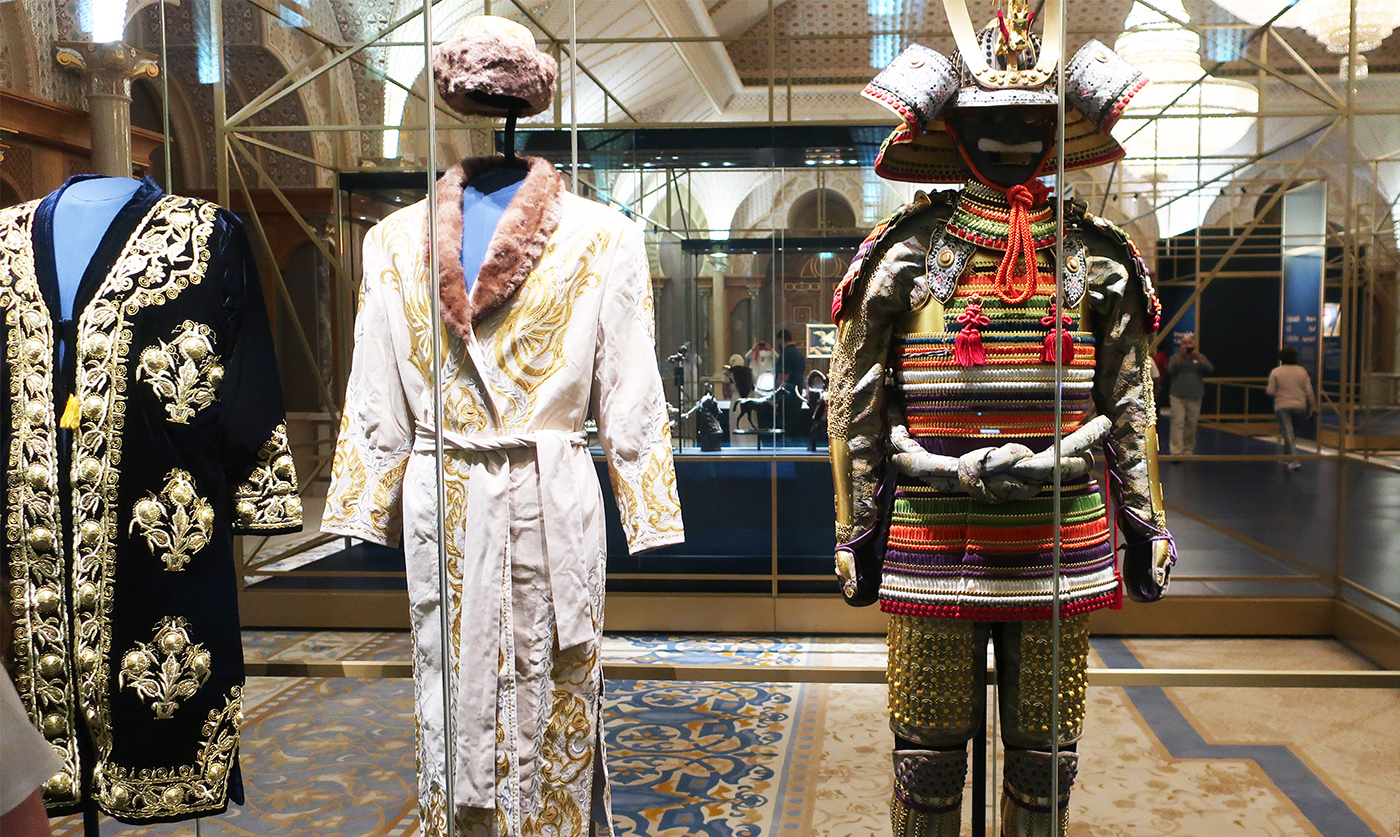
Not mentioned in any of the guidebooks, but one of the most impressive rooms in the palace, is the museum of gifts given by the world’s diplomats to the president of Abu Dhabi during state visits. What do you give a sheik who has everything? Think crystal artworks, jewel encrusted swords, falconry gear, calligraphed art books or a vintage ceremonial samurai outfit.
But wait, there’s more…a newly created festival
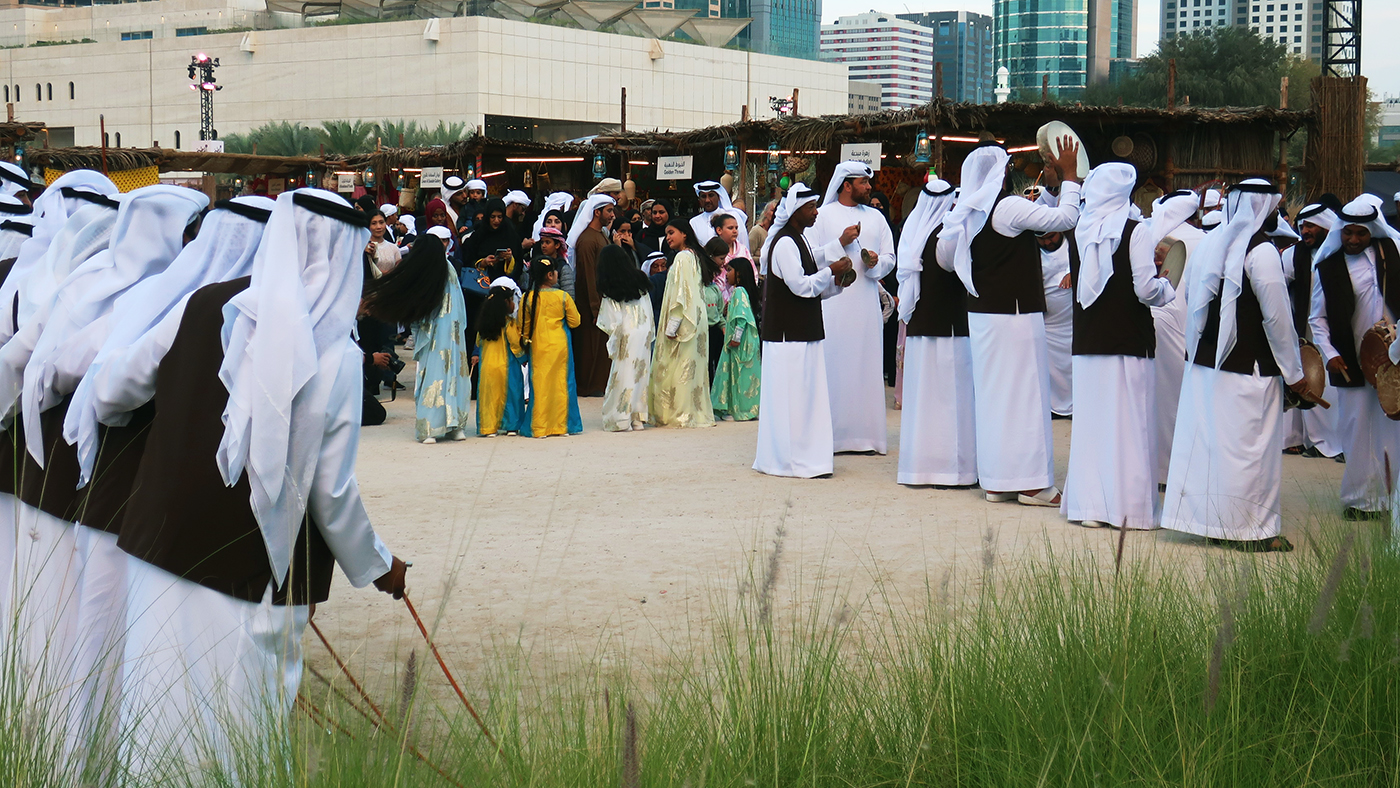
As awed as we were by our tour of the palace, there was a second stop on this tour that made it uniquely memorable.
After the bus ride back to the palace’s visitor center, we rejoin our Costa tour bus where the guide says our next stop will be the city’s original palace, Qasr Al- Hosn. But we were in for a special treat because we were arriving in the middle of the newly created Al-Hosn Festival, a 10-day event designed to offer locals as well as visitors an introduction to Emirati heritage, from hospitality and food to traditional dress and crafts.
The Cultural Foundation inaugurated the Al-Hosn January festival just three years ago, with a goal of providing an insight to the now gentrified locals as well as visitors a look at life was like in Abu Dhabi, whose economy depended on fishing before the discovery of oil in the 1960s that transformed a desert village into a sprawling metropolis of sky-piercing buildings.
Al-Hosn is held in a park that was the original block of the city that dates to the 1700s when Qasr Al Hosn was a fort built to defend the only fresh water well on Abu Dhabi island. At the festival, you can forget for a moment that the area is today surrounded by towering high rises, most of them built in the last decade.
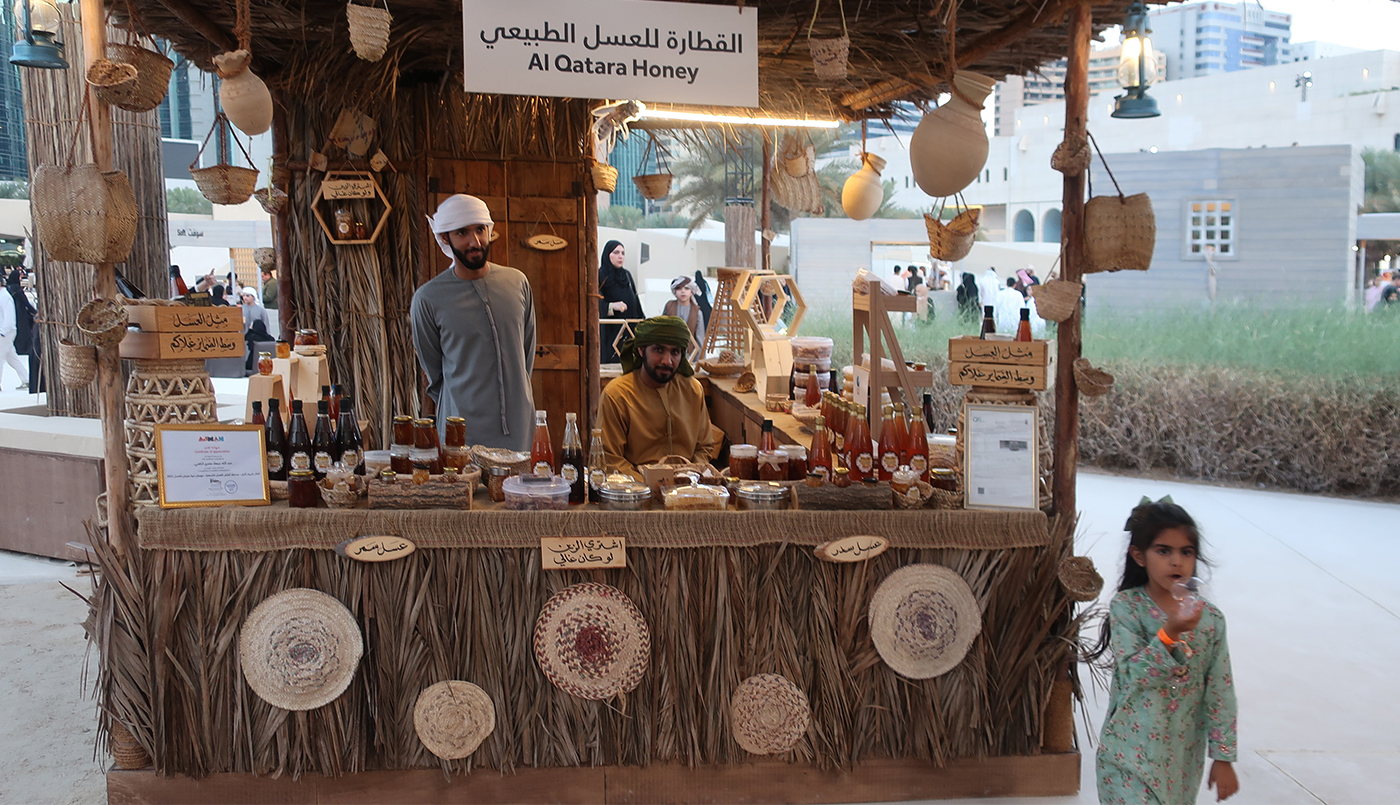
The festival is divided into three zones: heritage, crafts, and community, with a strong emphasis on traditional clothing and music. While on the streets, Emirati men and women now wear Western fashions, at the festival it’s dress up in traditional gear time.
It’s a black and white party. Men dress in ankle-length white robes known as kandura with long head scarves known as ghutras held in place by a rope-like agal. Women in contrast wear black: the local abaya is a flowing cloak worn with a hijab. Older women may also wear a mask-like burqa.
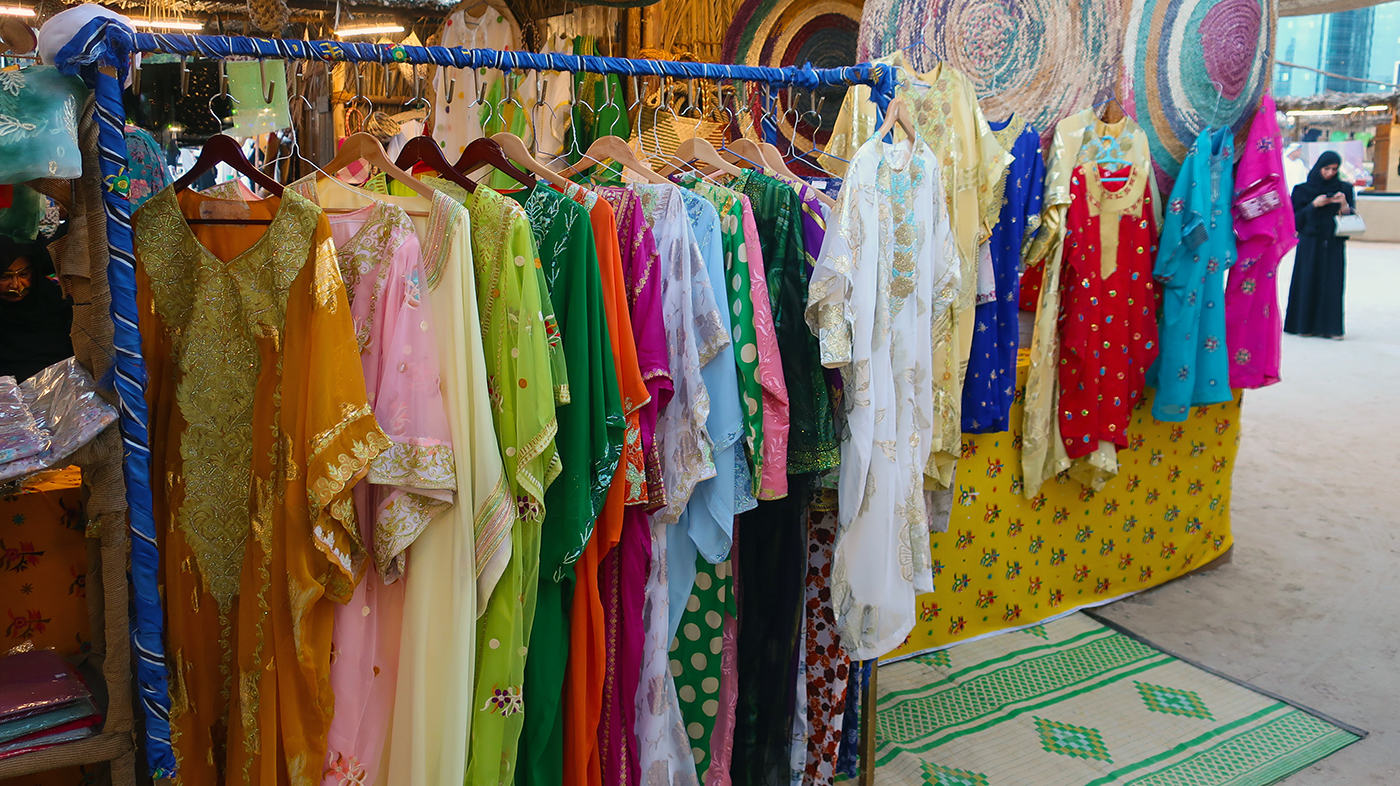
But color is everywhere in what’s on offer in the shops. In the zone called the Makers Village, stalls built of reeds feature locally made crafts that are much more artisanal than the mass-produced trinkets and logo clothing that are proliferating in the few authentic souks that haven’t been replaced by shopping malls in the modern UAE. Clothing stalls feature the traditional fashions of decorative embroidered and sequined kaftans in a rainbow of colors. A vendor offers generous tastes of rich local honeys in shades from amber to almond to red.
In the heritage zone, musicians and dance groups sing traditional songs and sites demonstrate elements of traditional life in the desert, including falconry, traditional Emirati weddings and camel trekking.
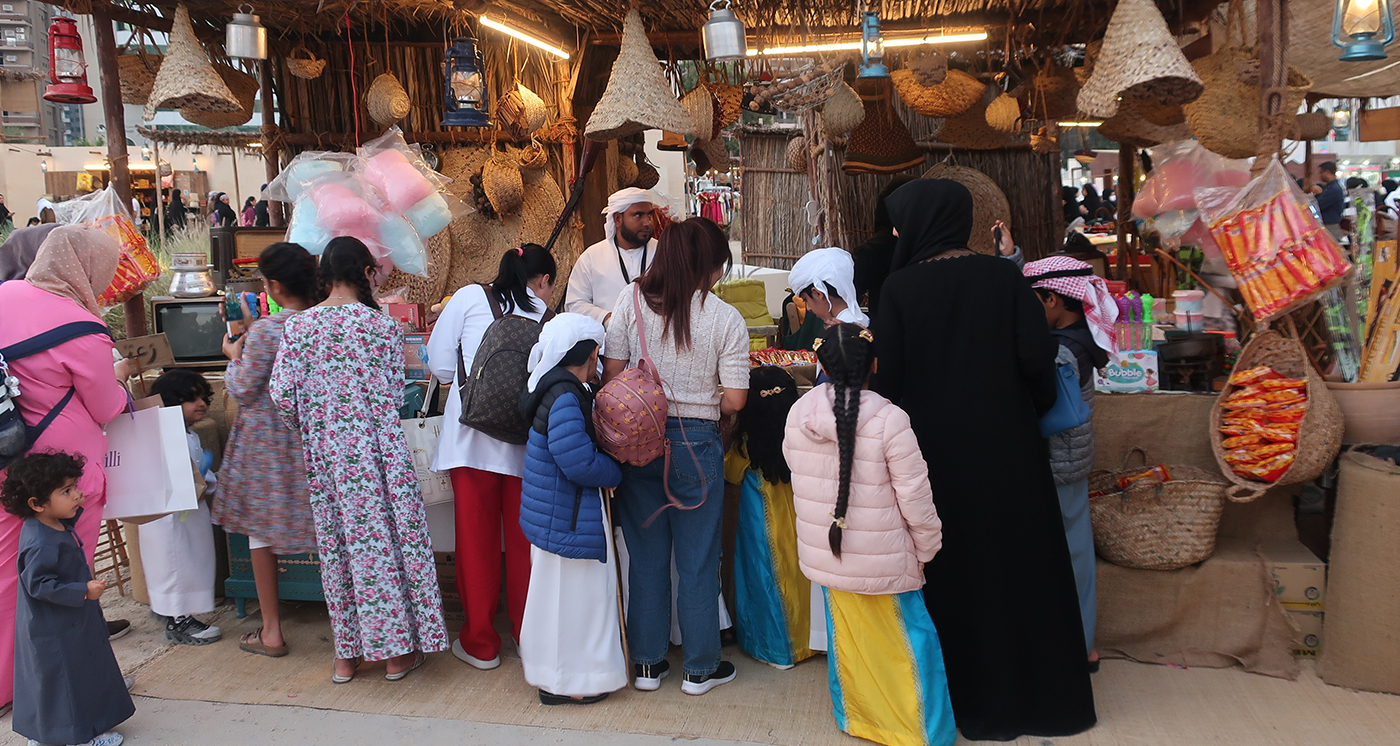
A particularly popular area is the food stall zone that features dishes cooked over wood fires. A kids’ favorite is the candy stand that includes traditional halva as well as more contemporary treats like cotton candy, lollipops and chocolates.
Everywhere, the sounds of music blend with the scents of incense and spices. It’s all very intoxicating and we didn’t get back to Costa Toscana until well into the evening after an unforgettable day.
Planning ahead
After a summer and fall in the Mediterranean, Costa Toscana will again be visiting Abu Dhabi on United Arab Emirates cruises from December through March, 2024, on cruises that include Dubai, Qatar, Oman. The Al-Hosn festival is scheduled in the second and third weeks of January.
The best time to visit the Emirates is winter, when temperatures are in the 70s by day and can chill off in the evening, a respite from the hot months from April to October, when temperatures and humidity soar.
Story by Wallace Immen, The Cruisington Times

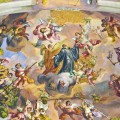

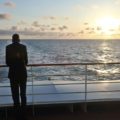
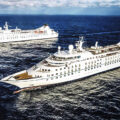
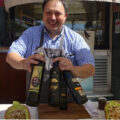
1 Trackback / Pingback
Comments are closed.